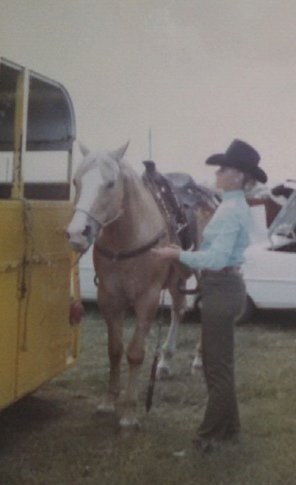By Bailey Bryan

Generally when one hears the word “Hawaii” there are visions of palm trees, drinking coconuts, warm beach, a red sunset, pineapples, luaus and of course hula dancing…so how do cutting horses fit? Think about it – no, really. How does an island get resources for such a complex sport that requires cattle, horses and land?
CHTO asked member and former Hawaiian cutter, Dee West, all about it. Dee relocated to Texas to be in cutting’s capital.
Though today there are many differences between cutting in Hawaii and other mainland areas, like Texas, West began cutting in Hawaii from 1971 through 1973, where she said the main difference was the cattle.
“Back then cattle weren’t so in-bred. Cattle were slower and easier to cut and hold,” West said. “Now you have faster, tough cows, but it’s hard to have fresh cattle in all classes.”
When West was cutting in Hawaii, there was only one class; however, even though the sport has grown, obtaining fresh cattle for everyone on an island can be quite difficult as well as not always possible.
Just to show in Hawaii, West would have to fly to the main island of Hawaii and then take a barge and at the time there were only two stables on Oahu.

Dee West cutting in Hawaii.
“Every weekend we would put our horses on a barge to different islands. It was so much fun, but a full day of showing,” West said.
Even though there was only one class for cutting then and there was no prize money, ribbons were enough of an incentive to spark the interests of most and continue to help the sport grow.
West stated that Hawaiians are known for their competitiveness and everyone wanted to win, making ribbons and bragging rights a valuable prize worth traveling and competing for.
During her time in Hawaii, West showed a palomino stallion named Skippers Count and together, they won pleasure, trail and cutting events. West credits her passion for horses and cutting to stem from her experiences on the big island.
Despite cutting not being as big a sport in Hawaii when West resided there, the idea of the sport became big as the years went on. As a more serious contender, West moved to the mainland to continue to compete but says she “feels blessed to have had the opportunity to learn about cutting” in Hawaii.
